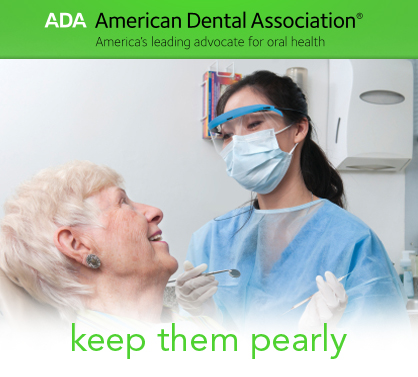Dental tips and facts you may not know
We’ve all sat in that dentist’s chair – whether happily or unhappily – knowing it will do our teeth good. And it is a safe bet to assume you brush your teeth. But do you truly understand all the factors behind good dental health? Perhaps you may just learn a few.
The American Dental Association’s recommendations are pretty basic. Brush two to three times each day, floss once a day and see a dentist twice a year. But one may be more surprising: Eat a balanced diet low in carbs.
“What we eat makes a big difference in the environment in our mouth,” Ruchi Nijjar Sahota, D.D.S., American Dental Association consumer advisor, said. “If we are eating a lot of carbs, the more digestible sugars we incorporate into our mouth. The more that we put into our mouth, the more the bacteria in our mouth can create cavities. Sugars, any kind of digestible carbohydrates, are going to contribute to cavities.”
Everybody has bacteria in his or her mouth. The equation is simple: bacteria + sugar = acid, acid + the tooth = cavity.
Snacking can therefore also increase the risk of cavities. The more often you eat, the more time bacteria have to create the acid.
Your dental health is linked to your general health. Gum disease and other dental issues have been linked to stroke, heart disease and diabetes.
“A good, healthy mouth equals a good overall body … Plus, we need our teeth to do many functions throughout the day: to smile, to eat, to talk. So taking care of our teeth is very important,” Sahota declared.
Going to the dentist regularly is important on many levels. Your dentist can tell you if you are not brushing properly and teach you how to do so. In addition, if there is any problem starting in your mouth, whether it is gum disease or a cavity, you can get it taken care of it before it becomes a major risk.
Don’t make the mistake of skipping your dental appointment because nothing seems wrong. Sahota has seen patients start thinking, “‘You know what, everything feels good. I don’t have any pain. So I don’t need to see a dentist.’ You need to go to the dentist for prevention and maintenance as well as treatment.”
Regardless of how often you brush, you will have plaque, the sticky film of bacteria that coats your teeth, especially along the gum line. Plaque sits on the teeth until it is disrupted by brushing. Left on the tooth, the plaque interacts with sugars, creates acid and leads to cavities.
If plaque is not disrupted, it also becomes hard and turns into tartar, or calculus. That’s when you must go to the dentist to get it removed with special instruments. If left too long, calculus can eat away at the bone under the gums, causing periodontal disease.
But some still find going to the dentist scary. Sahota’s advice: “If you can talk to your dentist about what it is that scares you, if you can become comfortable with the person who is your dentist, that fear can very easily be fixed.”
Her patients’ concerns are a high priority – as they should be.
“When we first meet a patient, I want to make sure that person is very comfortable in my chair so that if there is anything making him or her scared, I can combat that,” she said. “Whether it’s with explaining what we are going to do with 100-percent details so that there is no question or whether it’s listening to some nice music while we are working. Whatever we can do to combat their fears.”
According to Sahota, following these three ADA recommendations can prevent major dental issues from cropping up later. The power rests in the patient’s hands.
To help you sort out the confusion of which brands to buy, follow these simple guidelines. For toothpaste, choose any fluoride-containing brand with an ADA seal. Your toothbrush should be soft bristle. And depending on your flossing needs, some flossing aids are better than others. Ask your dentist.
To pick a dentist, sometimes your friends can be the best resource. You may also check out the “Find a Dentist” link on the ADA’s website, which provides details about each member. You can rest assured: All ADA members follow a code of ethics and are of the highest professional standing.
“Your dentist is a health care provider and you want to make sure you are comfortable in that chair,” Sahota explained. “That all of your questions are answered and you feel comfortable with that person –not just that they are going to provide you dental treatment but the person you are talking to and the person that is going to give you that treatment.”
Children should follow the same procedure as adults. Although children have baby teeth – placeholders for their permanent teeth – they should be treated mostly the same.
Of course, children might need extra accommodation in the chair. Sahota recalls a small child coming into her office needing his teeth cleaned. But before she could do so, his mother insisted that she sing to him. Sahota imagined perhaps the ABCs. But no: His song of choice was “Party Rock.”
“Whatever can get that patient to be comfortable and understand that brushing and taking care of your teeth can be a fun and beneficial thing to their life is well worth it … At the end of the day, hopefully his experience was fun and positive and memorable in that dentist chair, and he will always think of going to the dentist as fun and positive and that will make for better oral health for many years to come,” she said.
For more information, including how to brush and floss properly, visit www.ada.org.
Tagged in: dental, dentist, teeth, dental health, american dental association, dental care,

LadyLUX via American Dental Association, istock



